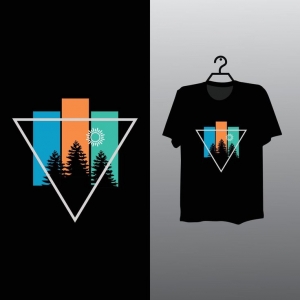Picture being a SOC analyst and being bombarded by 10,000 firewall alerts, endpoint detections, and cloud logs every day each of them is a potential crisis that could be a nightmare to your organization. It is not hyperbole in 2025, and many teams will have to contend with a growing threat of cyber attacks, such as advanced ransomware and AI-driven phishing. Introduce SOAR (Security Orchestration, Automation and Response), the technology that has evolved out of simple scripts into an automation powerhouse that reduces the mean time to response (MTTR) timeframes on a single incident down to just minutes in highly developed systems. To tech enthusiasts who like to break down the ways in which the code and AI transform warfare in the digital domain, the story behind SOAR is an exciting tale of invention.
In this post, we shall trace the lineage of SOAR since the hectic manuals-driven era to the present proactive defenses that are driven by AI. We will dissect the technological changes, highlight major milestones and preview the future, think about hyperautomation and agentic AI. For the DevSecops pipeline hacker or even the cybersecurity nerd inclined to the home, knowing the direction of SOAR and how it is combining human intelligence with machine power will enable it to secure networks against persistent attackers.
The Pre-SOAR Era – Manual Chaos in SOCs (Pre-2015)
Security operations centers (SOCs) before SOAR had invaded the scene were analogous to digital Wild West posts: spreadsheets, emails, gut feelings, versus a blizzard of threats. Imagine this- antivirus, intrusion detection systems (IDS/IPS) and early SIEM systems ( consider ArcSight or simple Splunk systems) would create signals in isolation, and the dots to connect would not be readily available. Analysts were to go through logs manually and correlate events across systems that were not even related and triage incidents on checklists that were more Stone Age than high tech.
The big headache? Alert fatigue. Research indicates that the pre-SOAR SOCs were overwhelmed with 90% reporting overwhelming backlogs and two out of every three not able to match the alert rate. False positives were wild out of control: 40-50 percent of the alarms went off because of innocent noise, and false alarms caused desensitization where the genuine threats were false. The problem of burnout was rampant; turnover was rampant as analysts simultaneously conducted manual work on tasks such as IP blocking or creation of tickets in tools such as ServiceNow and it can take days to manage incident with increasing attacks such as the 2014 Sony hack.
The pain was technically caused by the deficiency of APIs and integrations. Any automation was done using custom Python or bash scripts, which were brittle, difficult to scale and had to be maintained all the time. SIEMs were good at recording but bad at taking action, thus necessitating the involvement of human beings to close the gap. These flaws were revealed in the 2010s cyber explosion, the Stuxnet incident in 2010 or the Target breach in 2013 with its screams telling the world that a single approach is needed. In 2015 the stage was set that SOAR would become the savior with the automation of the teddy work and leaving the analysts to the high-stakes hunts.
The Birth of Modern SOAR – Rule-Based Automation Takes Hold (2015-2018)
SOAR did not happen simultaneously, as it solidified in the 2015s when cyber threats surpassed human response capacity. The first was the pioneering use of tools such as Demisto (since acquired by Palo Alto Networks in 2019 to constitute Cortex XSOAR) and Splunk Phantom, which was the result of the necessity to coordinate the security processes beyond simple detection. The term was officially coined by Gartner in their 2017 report on Innovation Insight, and is defined as a combination of incident response, orchestration/automation, and threat intelligence management.
First-gen SOAR was fundamentally based on rules: rules that guided and automated regular operations. Examples include a SIEM notification on suspicious login leading to an IP quarantine, user notification and log enrichment, all through API integration with more than 100 tools. The advantages were direct—cutting the manual procedures by 40-50 percent and cutting down response times, yet it required coding skills to develop such playbooks. Also read Why SOAR Matters: The Need for Speed in Cybersecurity.
Landmark after landmark came: The 2017 Market Guide by Gartner recognized SOAR as a category, and triggered enterprise usage of compliance such as NIST 800-53. By 2018, opposite to the manual process delays that were noted by such threats as WannaCry (2017), SOAR platforms were combining with EDR platforms to isolate endpoints. This was a good time to be a tech enthusiast - it was DevSecOps in practice, but the scalability problems were coming as the playbooks were becoming complicated.
Maturation and Scalability – Low-Code Revolution and Broader Adoption (2019-2022)
As SOAR came into full swing after 2018, it became not code-heavy beasts but user-friendly systems. The automation process was democratized with the transition to low/no-code interfaces (draggable builders in software such as IBM Resilient (since renamed QRadar SOAR) and Swimlane), as now taking just days to go through the playbook. Integrations swelled to to be cloud giants such as AWS and Azure, and EDR provided by CrowdStrike, to facilitate a hybrid environment.
The 2020 pandemic accelerated its deployment: Remote work increased phishing 600 percent, which made SOAR valuable in automating responses in scattered teams. The market growth has gone off the scale, estimated at approximately $500M in 2019 and up to more than 1B in 2022, due to SOC efficiency gains. Such difficulties as playbook personalization were addressed by modular structure and case management of advanced persistent threats (APTs).
For depth, visualize a phishing workflow: Alert from SIEM → Auto-scan email → Block URL → Notify via Slack. This era addressed silos, but as threats grew smarter, SOAR needed brains—enter AI.
AI-Powered Transformation – From Reactive to Proactive Intelligence (2023-2025)
In 2023, the AI-powered SOAR has transformed SOAR into a rule-follower, but now it has predictive power. Native AI (GenAI) applications such as GenAI from Splunk enabled users to use natural language questions, such as Prioritize high-risk alerts, and automatically generated reports, reducing the time spent by analysts by up to 70%. Instruments improved: Copilot (introduced 2025) by the Exabeam is an isolator of endpoints that operates with the help of AI agents to detect anomalies with the help of machine learning (ML).
Trends in 2025? Hyperautomation blends SOAR with XDR for end-to-end hunting, achieving near-100% alert automation in SOC 3.0 setups. AI types shine: ML for pattern spotting (e.g., behavioral analysis in Securonix EON), LLMs for playbook drafting, and agents for execution. Market snapshot: Valued at $4.1B in 2025, projected to hit $8.5B by 2030 at 15.7% CAGR.
Going into details: ML models employ supervised learning to filter false positives, and LLMs produce code snippets. Edge cases? Hallucinations in AI are prevented with in-the-loop approvals by humans. Such systems as Blink Ops provide adaptive workflow, and Google Security Operations natively consumes SOAR data on AI dashboards. It is not merely reactive but instead proactive hunting through predictive ML on threat feeds is the emerging standard practice.
Future Outlook – Hyperautomation and Beyond
In the future outlook, the next action by SOAR is full agentic AI as per the 2025 trends by Gartner: Self-orchestrating systems do not need human modifications. Open-source gems such as Shuffle receive AI extensions via community, and issues such as GDPR data privacy and quantum-resistant integrations loom over the horizon.
To amateurs, the possibilities are limitless: Play with free plans of Cortex XSOAR to create AI playbooks, integrate with edge AI to protect against IoT attacks. With cyber threats constantly changing, the combination of SOAR with AI will guarantee a robust and scalable security. For more information visit WebaviorVPN.
Conclusion
Since SOCs, which are not artificial intelligence but manual, served the pre-2015, SOAR has transformed cybersecurity the way to more inclusive and faster and smarter AI-based symphonies of 2025. It has not only got tools but also the development of defense in a world where the threats never sleep. Plunge, tech lovers- create your own playbook and be on the frontline against cyber carnage. According to one expert, AI and SOAR are transforming security on a real-time basis, creating unbreakable systems.







